Volumetric Solar Equation
“Volumetric Solar Equation” by Rafael Lozano-Hemmer is a spherical chandelier that represents the turbulence, flares, and spots visible on the surface of the sun. The piece is animated by fluid dynamic equations—reaction-diffusion, Navier-Stokes, Perlin noise, and fractal flames—combined with the latest imagery from NASA’s Solar Dynamics Observatory (SDO) and Solo and Heliospheric Observatory (SOHO), and is inspired by geometric abstraction artworks by Latin American artists such as Jesús Rafael Soto, Carlos Cruz Diez, and Julio Le Parc. The content consists of a live simulation, not a video loop, that never repeats itself. Three metres in diameter, the sphere is made of 25,580 LED lights on 342 battens, which are arranged according to equations developed by Pierre de Fermat, specifically a spiraling pattern used to describe plant phyllotaxis. The sphere, therefore, has no vanishing points.
While pertinent environmental questions related to global warming, drought, or UV radiation might arise from the contemplation of this piece, Solar Equation also intends to evoke romantic environments of ephemerality, mystery, and paradox. Cultures around the world each have unique sets of solar mythologies and this project seeks to be a platform for both the expression of traditional symbolism and the emergence of new stories.
Solar Equation is co-produced by The Amorepacific Museum of Art, Seoul and the Musée National des Beaux-Arts, Quebec. The first Solar Equation was a projected aerostat and was commissioned by Federation Square in Melbourne in 2010.
Designed in Rhino/Grasshopper to create a hanging arrangement that utilizes a Fermat spiral, much like a sunflower face to prevent any direct sightlines through the LED battens, thus increasing the visual density from the same number of hanging points.
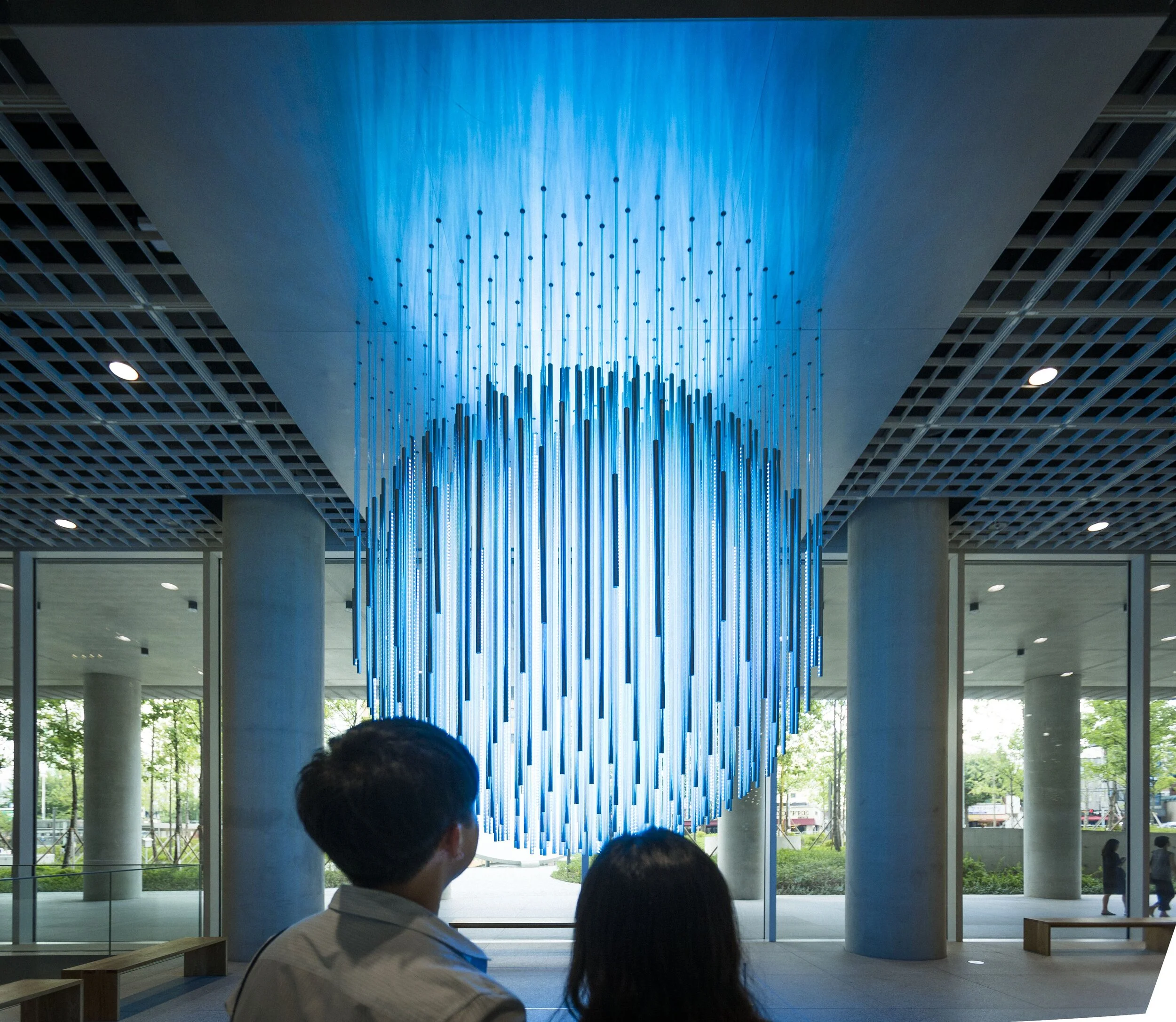


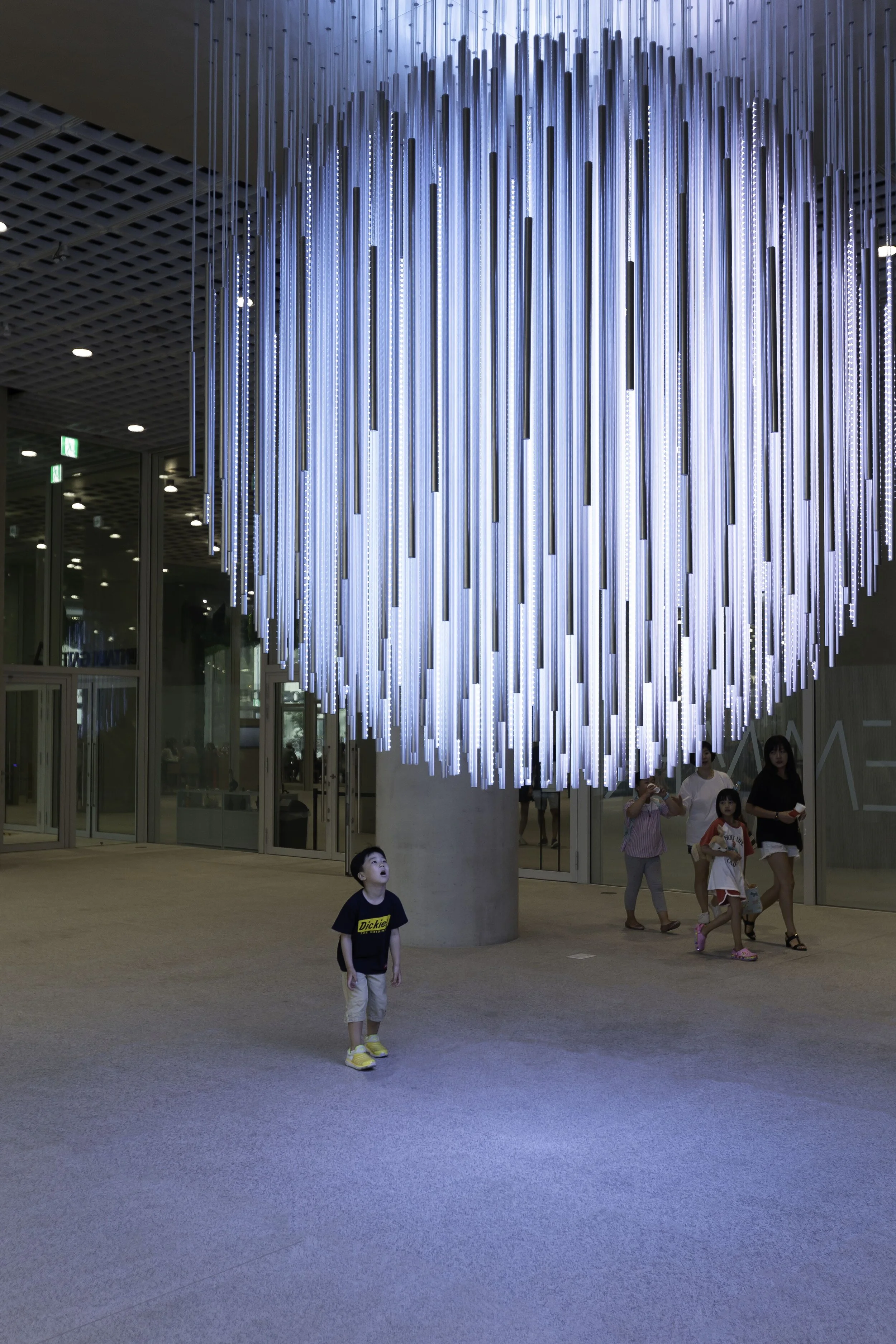
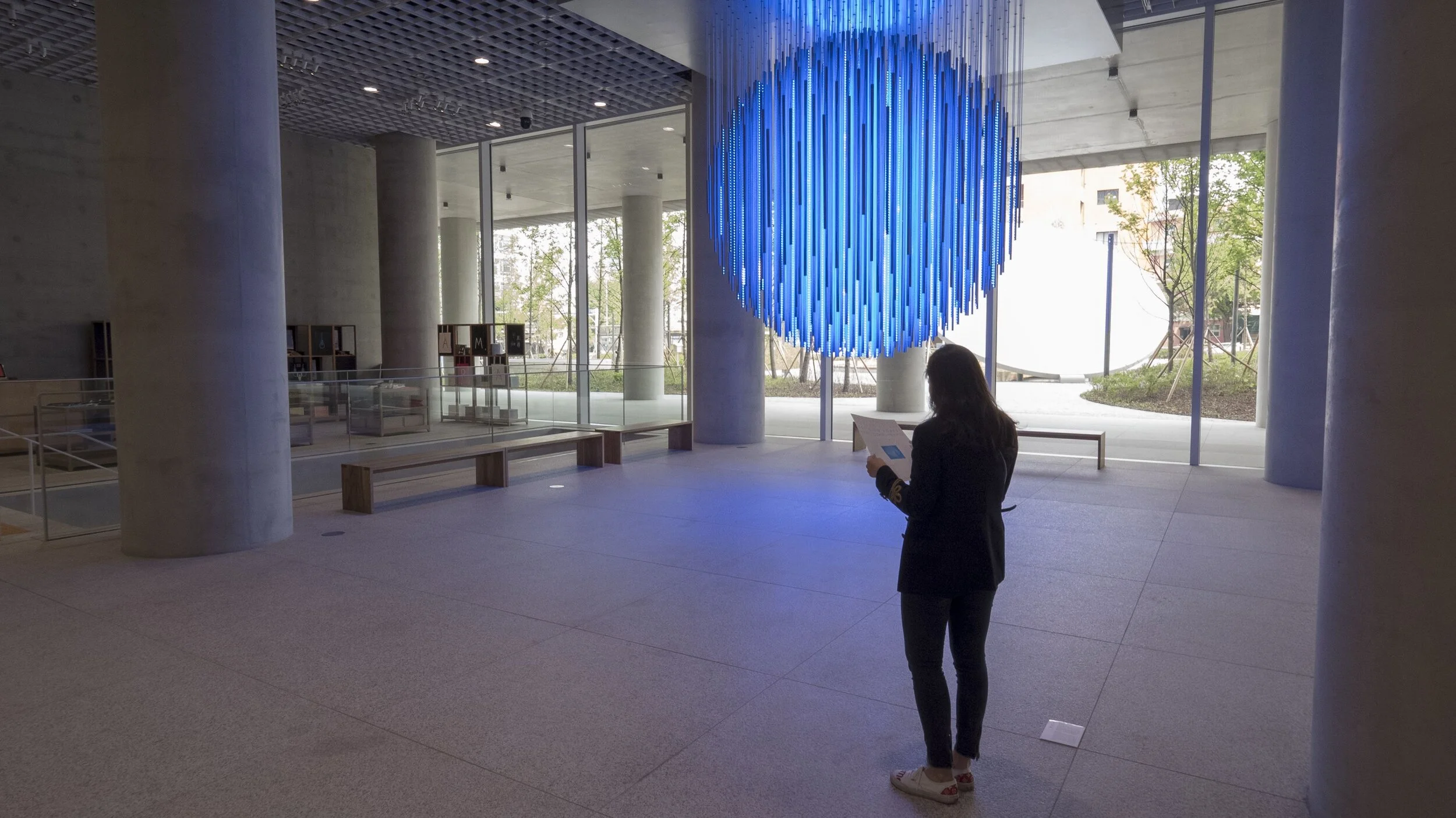
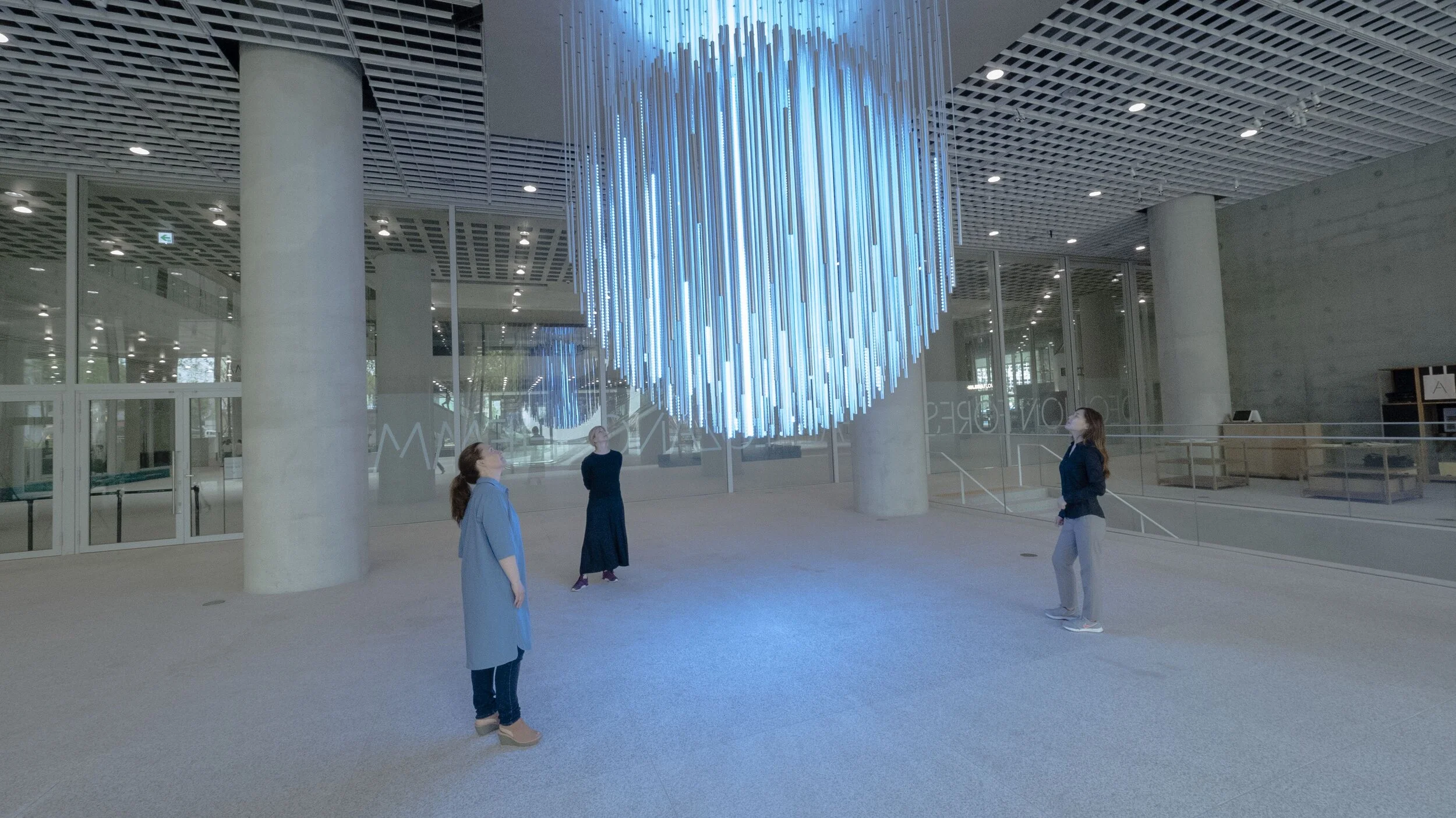

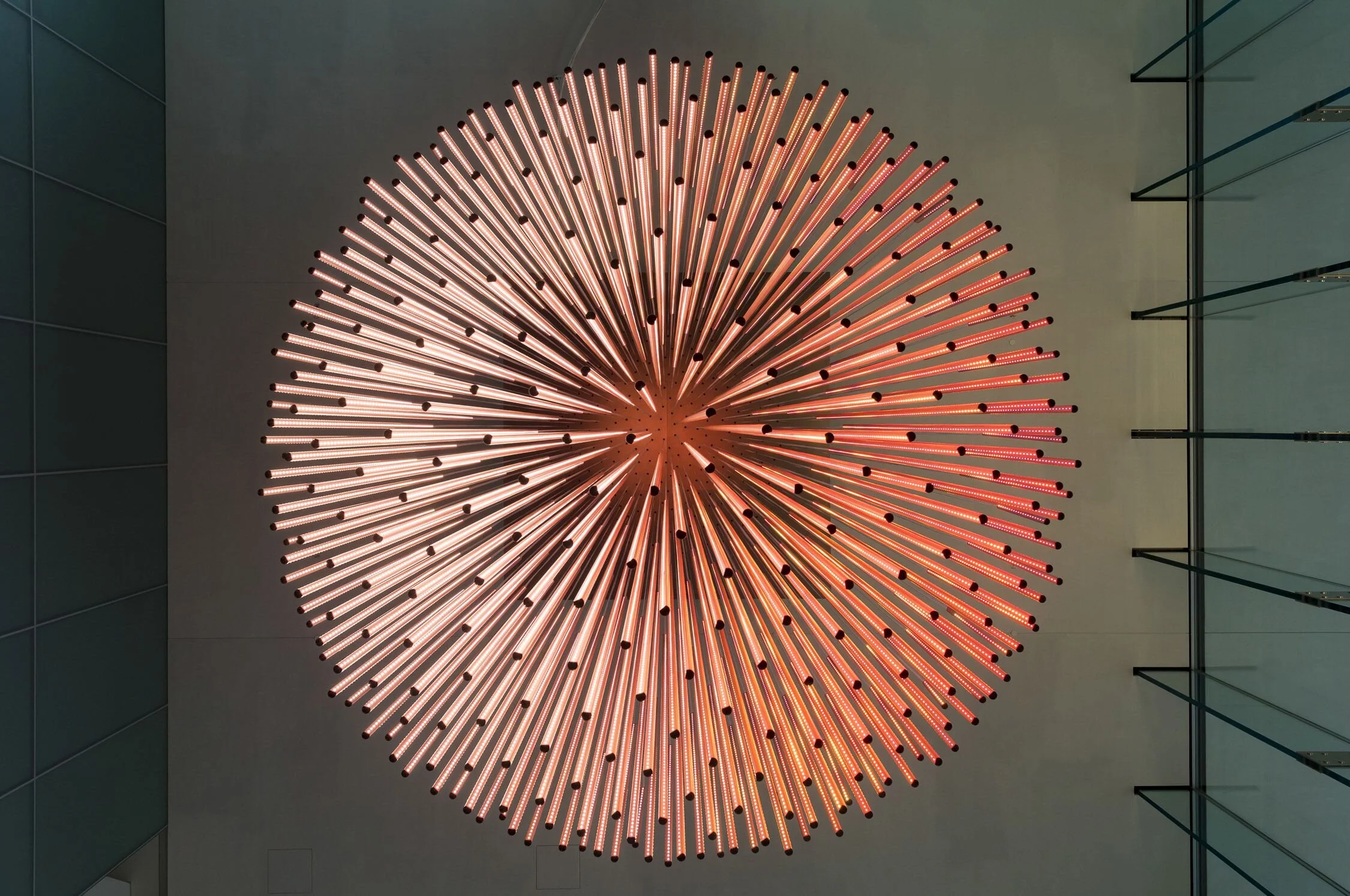
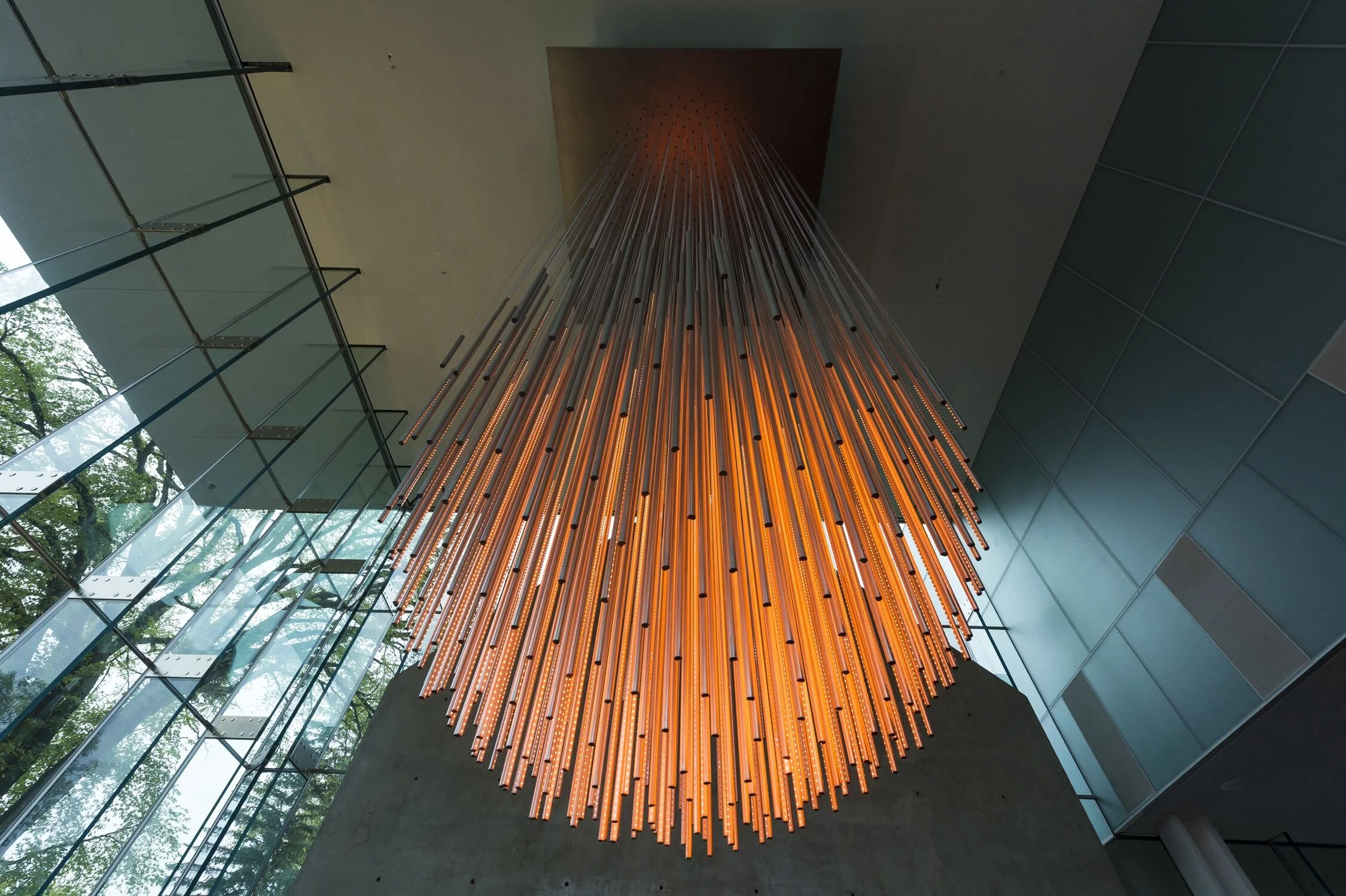
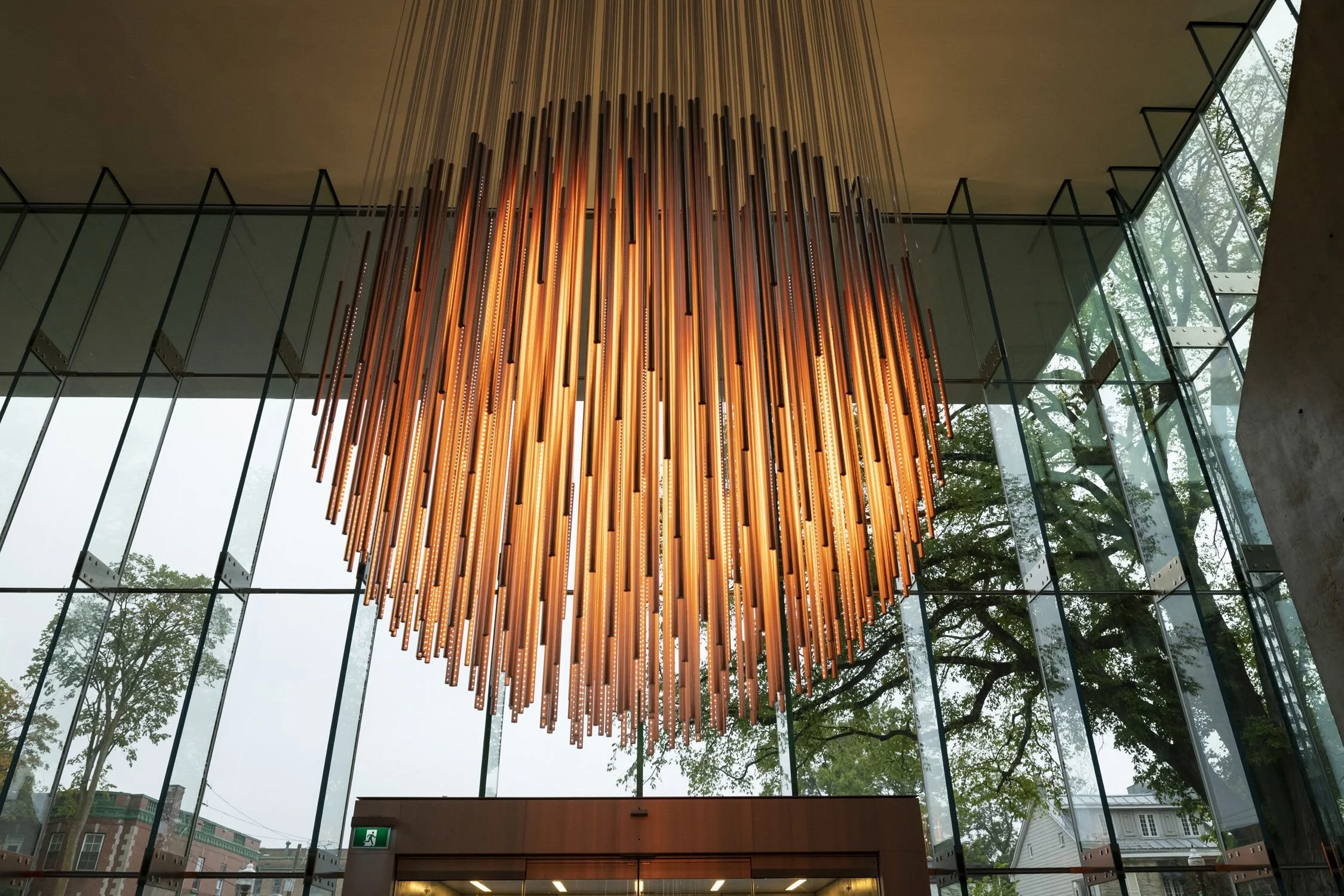
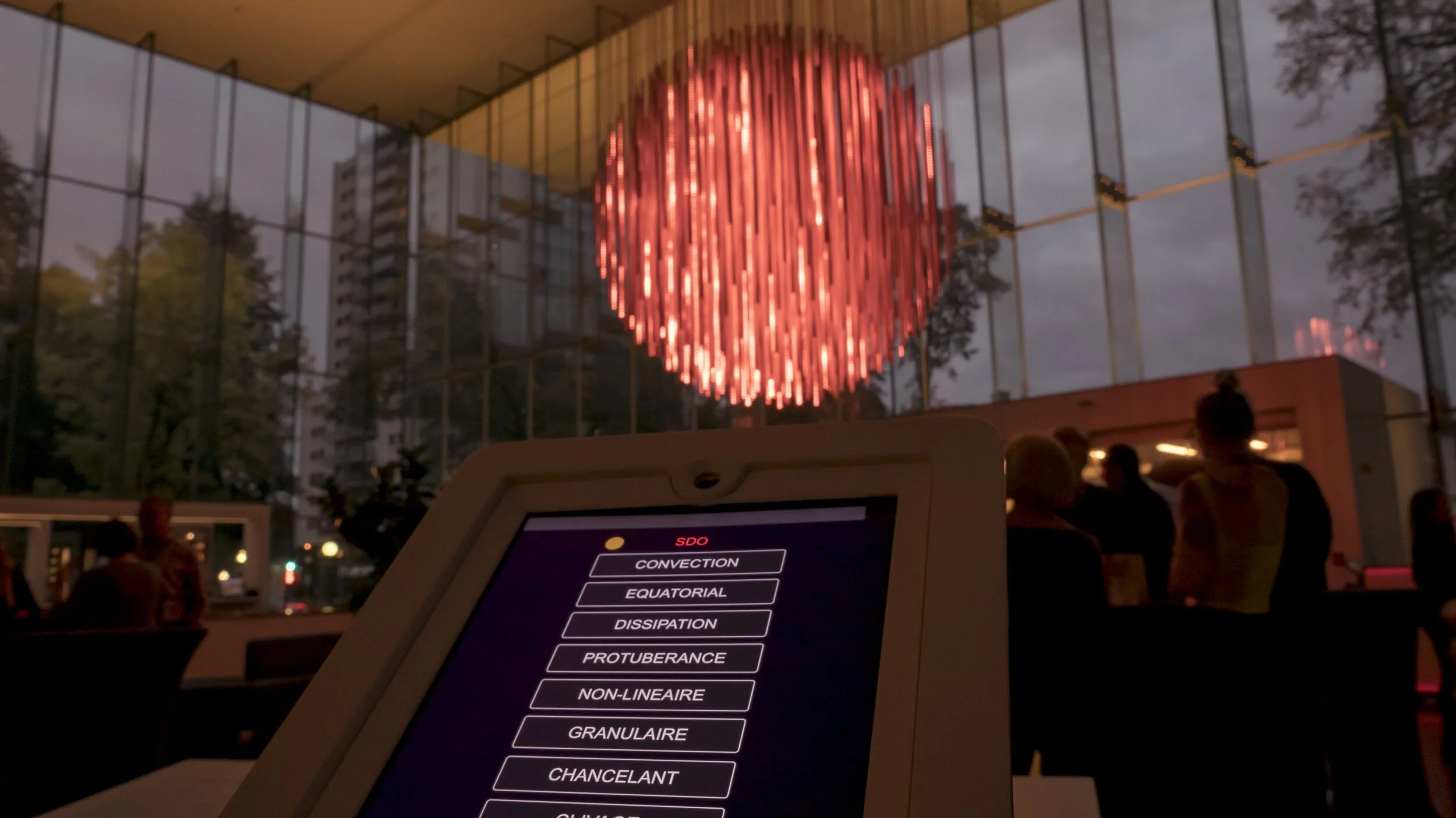
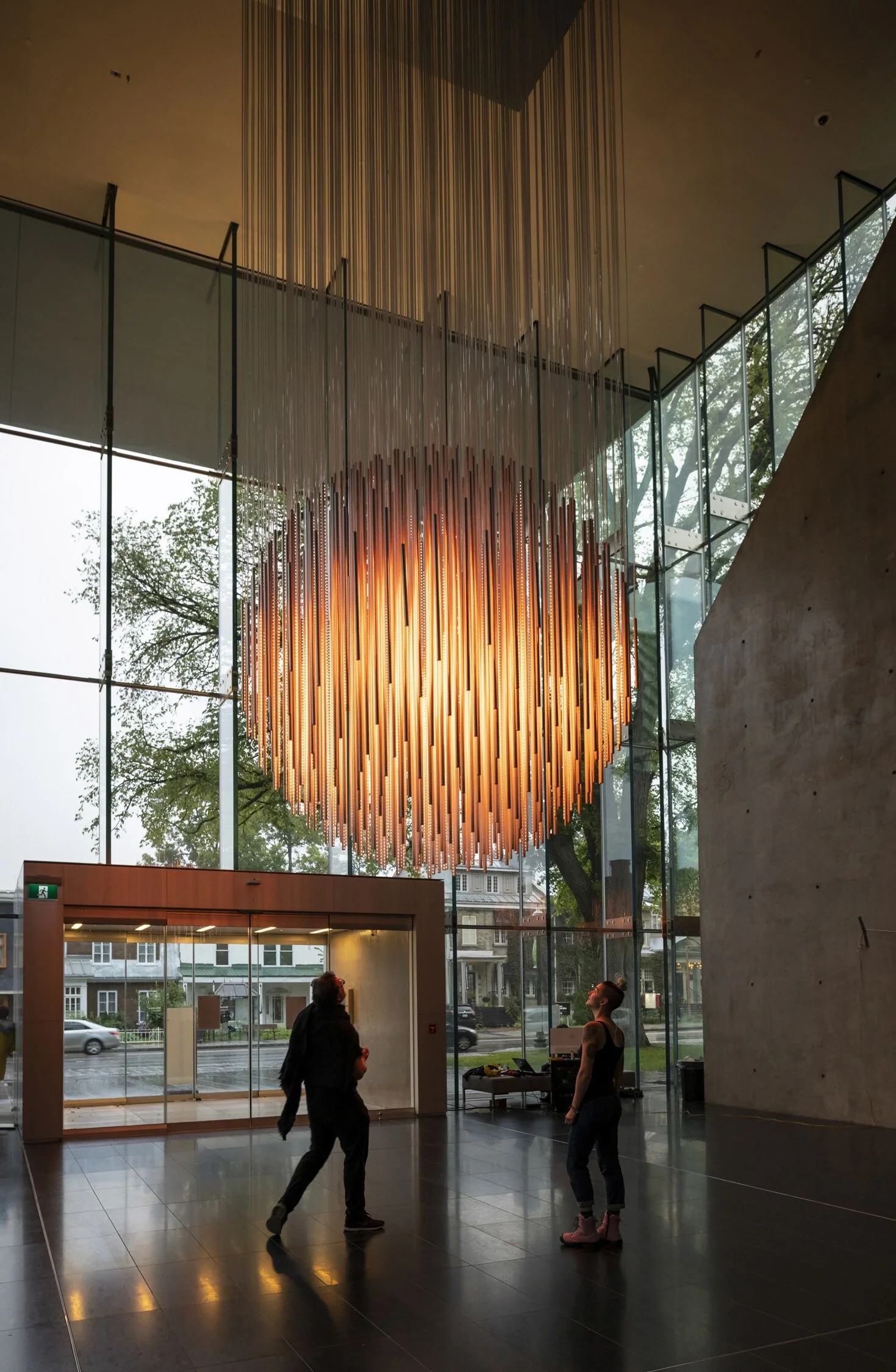
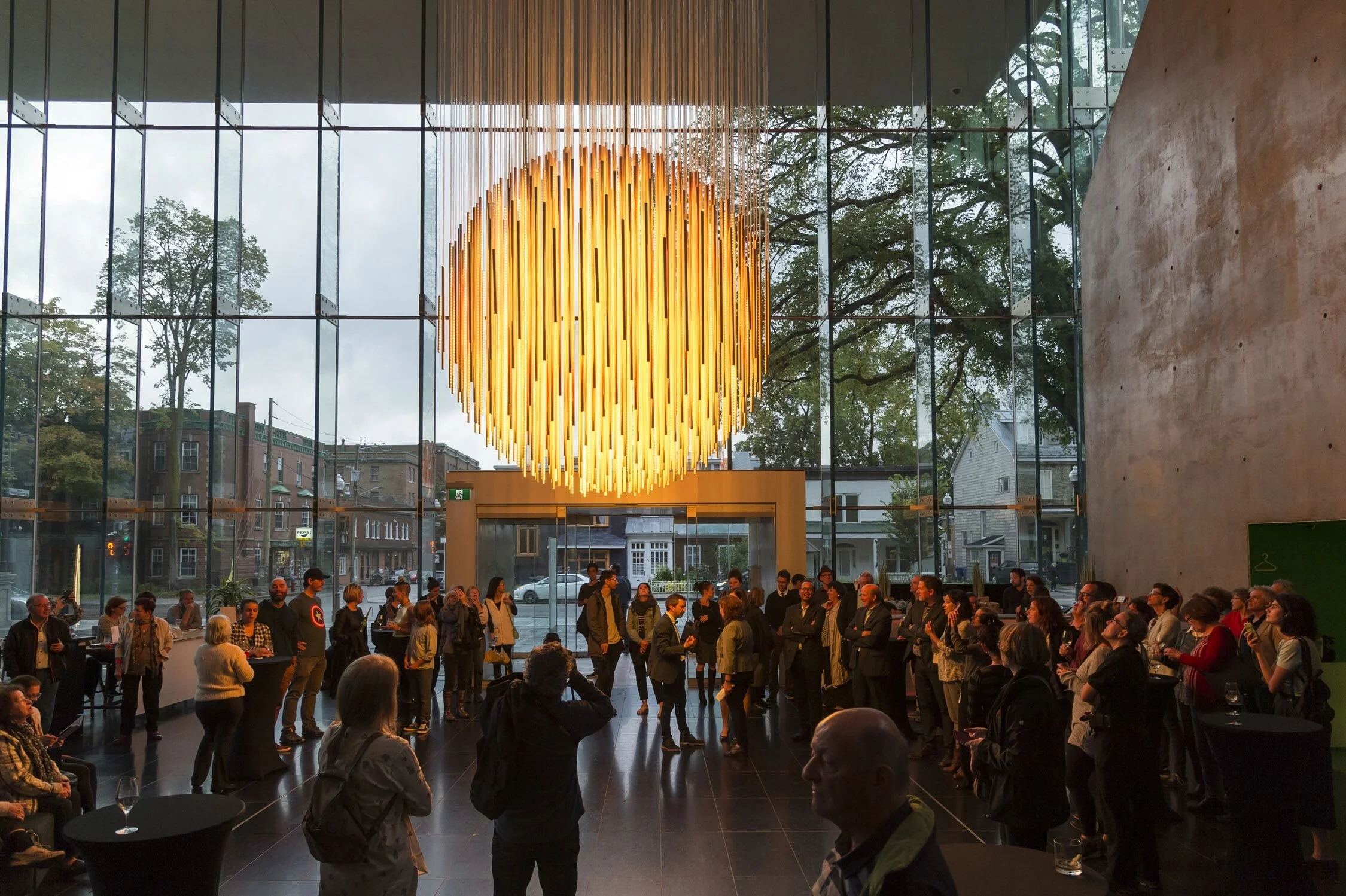
The Antimodular team in Seoul having a little break under the sun together!
